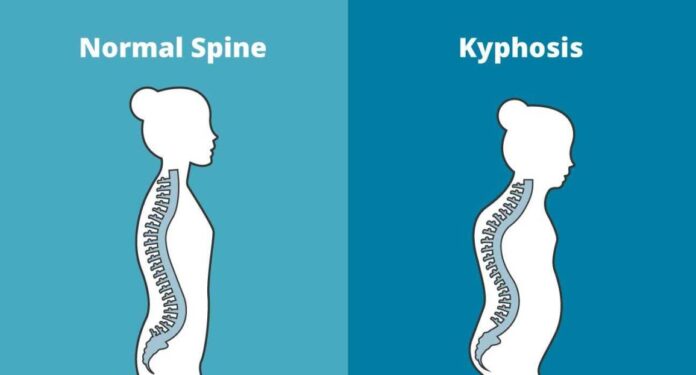Whether you march at a parade or sit before your laptop at your workplace, posture makes a huge difference in your overall physical wellbeing. And the back is the pillar of support on which every part of the body directly or indirectly relies. A good posture begins with an erect back, which supports the neck and shoulders and facilitates mobility. For this reason, individuals with underlying back conditions typically find it challenging to maintain their postures for long periods.
Kyphosis is one such debilitating back condition that causes long-term postural issues if left untreated. The good news is that with adequate medical treatment and physiotherapy, patients may effectively combat this condition and correct their postures. So, here is a detailed look at kyphosis as a condition, together with its symptoms and some practical kyphosis exercises that patients may engage in alongside medical interventions:
What is Kyphosis?
- Kyphosis, also locally known as “hunchback” or “round back”, is a condition characterized by a pronounced curvature of the upper back.
- Due to this condition, individuals with kyphosis may suffer from breathing problems, perpetual slouching, fatigue, mobility issues etc.
- Although kyphosis may occur in individuals of all age-groups, it is most prevalent among older women. In older patients, kyphosis typically results from weakness in the spinal bones, causing compressions and cracks.
- Depending on the patient’s age and the severity of the condition, doctors may recommend medical intervention and physiotherapy to correct and treat the curvature.
Exercises to Remedy Kyphosis Syndrome
Alongside medical treatment, doctors recommend physiotherapy and some basic exercises to provide patients with long-term pain relief and better posture. Here are some such practical, tried-and-tested kyphosis exercises:
- The Shoulder Blade Exercise
Exercising your shoulder blades can significantly help reduce the muscular tension in your back, facilitating better posture. For this exercise, sit upright and press your shoulder blades tightly together. Hold this position for up to 10 seconds at a time, and repeat the process for better results.
- Chin to Chest Exercise
The neck is an integral part of one’s posture, and weak neck muscles can contribute to kyphosis patients’ postural issues. Head retraction activities involve lying flat and trying to touch your chin to your chest. One may hold this position for 15 seconds and repeat the exercise up to 10 consecutive times.
- Push-Ups
Practised by individuals of all age-groups, push-ups are efficient exercises to facilitate flexibility, strengthen the core, and strengthen the backbone and its surrounding muscles. Individuals with more severe kyphosis may place their knees on the ground the entire time while doing push-ups. The others may place their toes to their ground and palms flat on the floor below their shoulders while doing the push-ups. Patients unable to perform these push-ups while lying on the ground can also lean against other surfaces like walls, position themselves at the proper distance from the wall, and complete the push-ups.
- The Superman Exercise
The superman exercise is well-suited only to individuals having mild to moderate levels of kyphosis syndrome. Here, patients should lie on their stomachs and outstretch their arms before them, over their heads. In this position, they should try to lift their arms and legs simultaneously towards the ceiling and pulse for up to 5-10 counts. This exercise can help flex the back muscles and strengthen the backbone, relieving pain and stress.
- Foam Roller Spine Exercises
Being readily available in the markets, foam rollers are handy tools to exercise and soothe the upper, middle and lower back. Here, the patients lie on their backs with the foam rollers placed under their mid-backs. Then, they roll their foam-rollers across their backs, massaging the spinal cord and thoracic spine. This exercise is a tried-and-tested technique to ease backache and improve posture, especially for patients grappling with kyphosis.
- Life Extension Stretches
This exercise is simple and effective for kyphosis patients at all levels of severity. It involves raising both your arms to a Y position with your thumbs pointing behind you. Patients should stand upright with their shoulder blades pushed back while performing this exercise. Taking some deep breaths while in this life extension and maintaining the posture while exhaling can help patients establish better body control.
Conclusion
There are several practical exercises that doctors and physiotherapists recommend for kyphosis. However, we are the best judges of our bodies, and each patient must evaluate his/her comfort levels while determining what kyphosis exercises to engage in. In conjunction with consulting experienced doctors and physiotherapists, close observation of one’s body can yield the best results over time.











